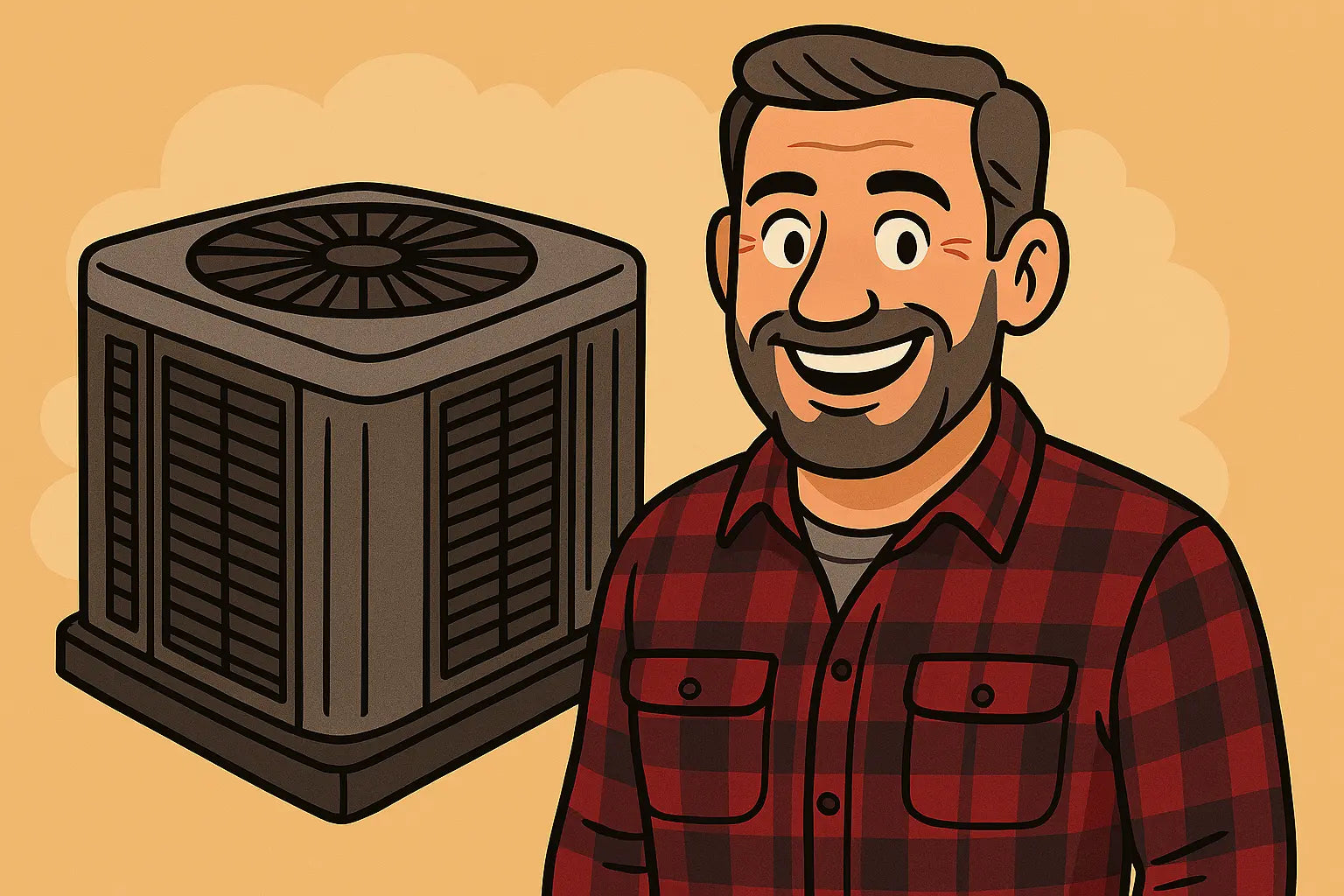Getting the Most from Your System Starts with the Basics
When homeowners fire up a brand-new Goodman 3 Ton 14.5 SEER2 R-32 AC system, they expect quiet, consistent comfort. But here’s the deal: if the DIP switches aren’t configured correctly during installation, even the best system will underperform. DIP switches are tiny, but they’re mighty—they tell your equipment how to behave.
Whether you're an HVAC pro doing a first install or a homeowner curious about how your system ticks, this guide breaks down exactly what the DIP switches do and how to set them for the GLXS4BA3610 condenser and AMST36CU1300 air handler.
What Are DIP Switches, and Why Do They Matter?
DIP (Dual Inline Package) switches are small plastic toggles located on control boards inside your HVAC components. Think of them as your system’s hardcoded instructions: they configure blower speeds, cooling modes, delay settings, and even how your system deals with dehumidification or electric heat.
When correctly configured, DIP switches:
-
Match the air handler airflow to system tonnage
-
Sync the blower speed with ductwork design
-
Optimize dehumidification cycles
-
Enable or disable time delays or fan ramps
But if they’re wrong? You could get poor airflow, humid air, short cycling, or even coil freezing.
Step-by-Step: DIP Switch Settings on the AMST36CU1300 Air Handler
The AMST36CU1300 is designed to work across a range of applications. This flexibility is made possible by its adjustable blower settings, which are controlled using—you guessed it—DIP switches.
1. Locate the DIP Switch Block
The DIP switches on the AMST36CU1300 are found on the blower control board, typically behind the lower front panel.
2. Set the Cooling Airflow Mode
Use the DIP switches to match the blower CFM to your system tonnage. For a 3-ton system, you’ll generally aim for 1,200 CFM.
Refer to the air handler’s installation manual for the correct switch combination. If you don't have a hard copy, you can check out a typical blower performance chart on the manufacturer’s site.
3. Configure Delay and Ramp Settings
DIP switches also determine blower motor delay—how long the fan continues to run after the compressor shuts off. This setting improves dehumidification and prevents short-cycling. You can typically choose:
-
No delay (for dry climates)
-
Fixed delay (for moderate climates)
-
Variable delay ramp (best for humid regions)
The variable speed ECM motor benefits most from a slow ramp-up and ramp-down, which helps reduce noise and improves comfort.
4. Double-Check for Electric Heat
If your AMST36CU1300 includes a heat kit, use DIP settings to activate blower staging and sequencing to match your strip heat wattage.
Configuring the GLXS4BA3610 Condenser DIP Switches
The GLXS4BA3610 is a high-efficiency 3-ton condenser using R-32 refrigerant, and while it doesn’t have as many switch options as the air handler, there are still a few key settings to confirm.
1. Verify Thermostat Signal Compatibility
Some units have a jumper or DIP setting to configure for single-stage vs two-stage thermostats. For this model, ensure your DIP setting matches your thermostat type.
If you’re unsure which type you have, Central Air PDX offers a handy thermostat mode explanation.
2. Defrost and Time Delay Settings
Depending on your region, the defrost timer DIP switch can be configured for:
-
30-minute intervals (default)
-
60-minute intervals (for milder winters)
There may also be settings for compressor time delay to protect the unit during power interruptions.
Tips for Getting the DIP Settings Right
✅ Read the Manuals: Goodman provides detailed setup instructions. If you're missing the paperwork, visit Goodman's technical literature library.
✅ Label Your Settings: Once you’ve configured the DIP switches, jot the switch settings on the inside panel with a permanent marker. It’ll save time on future service calls.
✅ Check Static Pressure: Correct DIP settings can still lead to poor performance if your ductwork is undersized. You can use a static pressure kit to verify airflow.
✅ Consider Climate: In humid climates, choose delay and blower ramps that prioritize moisture removal. In dry areas, fast-start cycles are often better.
When to Call a Pro
Setting DIP switches isn’t exactly brain surgery—but it’s easy to mess up if you’re not familiar with blower charts or ECM logic. If you're unsure, hire an HVAC technician to handle it or at least verify the setup.
A misconfigured blower can:
-
Trigger error codes
-
Wear out your ECM motor
-
Lead to comfort complaints or warranty issues
For peace of mind, schedule a post-installation checkup and ask them to verify DIP switch settings, refrigerant charge, and duct sizing all work in harmony.
Final Word: Don’t Let a Switch Flip Your Comfort
Setting the DIP switches on your Goodman GLXS4BA3610 condenser and AMST36CU1300 air handler might feel like cracking a secret code, but it's a crucial step for getting the performance and efficiency you paid for. Whether you're dialing in airflow for optimal dehumidification or making sure the blower profile matches your ductwork, these tiny switches carry a lot of weight.
If you’re still unsure whether you’ve got it right—or want to double-check the specs before purchasing—take a closer look at the Goodman 3 Ton 14.5 SEER2 System with the GLXS4BA3610 condenser and AMST36CU1300 air handler. This system is designed with flexibility and user-friendliness in mind, especially for those looking to fine-tune their setup without endless trial and error.
Need a cost breakdown for this system? Visit my guide: What to Expect When Buying and Installing This 3 Ton 14.5 SEER2 Goodman System.
And remember—correct DIP switch settings are the difference between “pretty good” and “peak performance.” Take your time, follow the manual, and don't hesitate to reach out to a qualified HVAC pro if you're unsure. Your comfort—and your energy bills—will thank you.
Until next time,
- Mike, your cool HVAC neighbor







